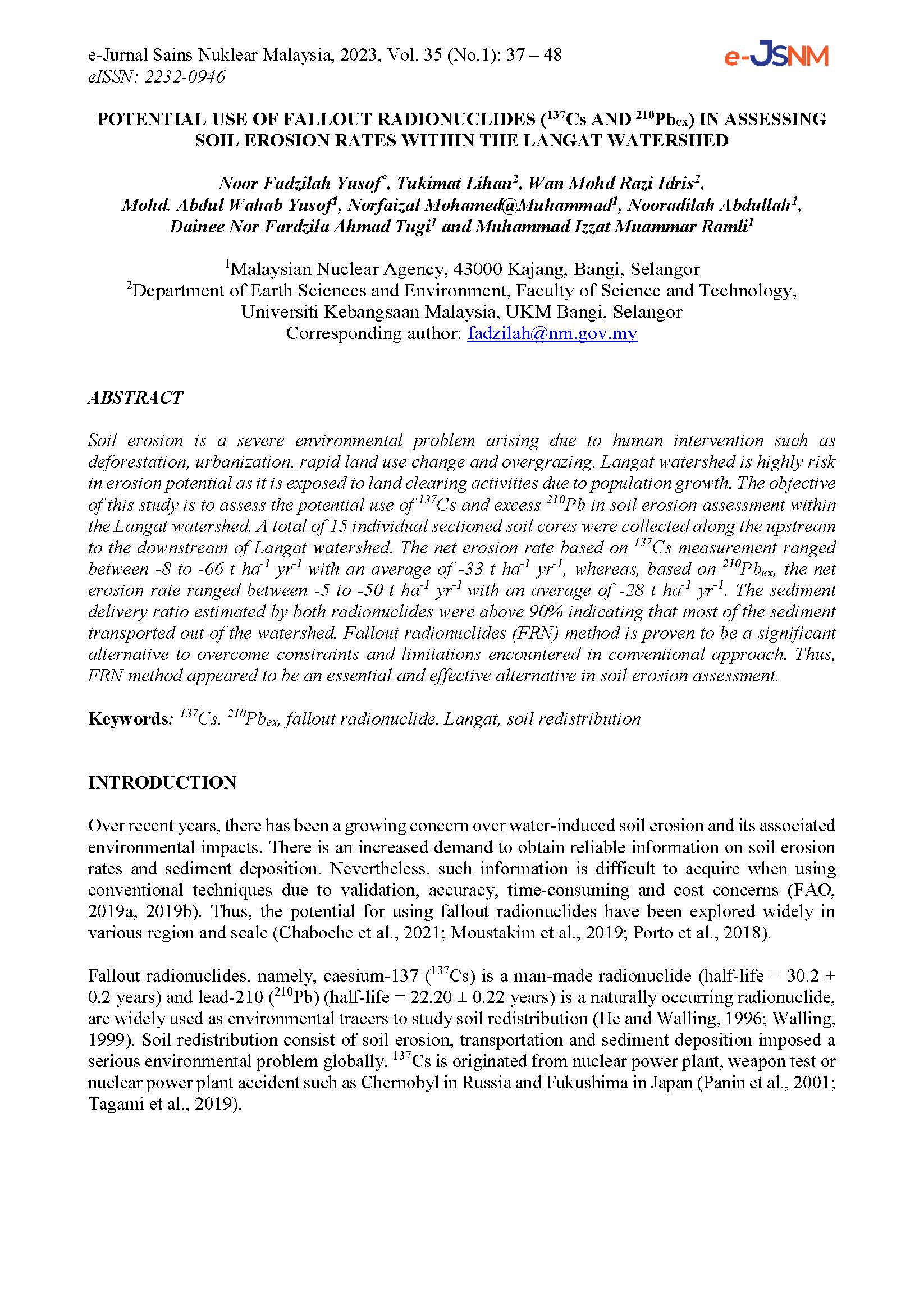POTENTIAL USE OF FALLOUT RADIONUCLIDES (137Cs AND 210Pbex) IN ASSESSING SOIL EROSION RATES WITHIN THE LANGAT WATERSHED
Keywords:
137Cs, 210Pbex, fallout radionuclide, Langat, soil redistributionAbstract
Soil erosion is a severe environmental problem arising due to human intervention such as deforestation, urbanization, rapid land use change and overgrazing. Langat watershed is highly risk in erosion potential as it is exposed to land clearing activities due to population growth. The objective of this study is to assess the potential use of 137Cs and excess 210Pb in soil erosion assessment within the Langat watershed. A total of 15 individual sectioned soil cores were collected along the upstream to the downstream of Langat watershed. The net erosion rate based on 137Cs measurement ranged between -8 to -66 t ha-1 yr-1 with an average of -33 t ha-1 yr-1, whereas, based on 210Pbex, the net erosion rate ranged between -5 to -50 t ha-1 yr-1 with an average of -28 t ha-1 yr-1. The sediment delivery ratio estimated by both radionuclides were above 90% indicating that most of the sediment transported out of the watershed. Fallout radionuclides (FRN) method is proven to be a significant alternative to overcome constraints and limitations encountered in conventional approach. Thus, FRN method appeared to be an essential and effective alternative in soil erosion assessment.


